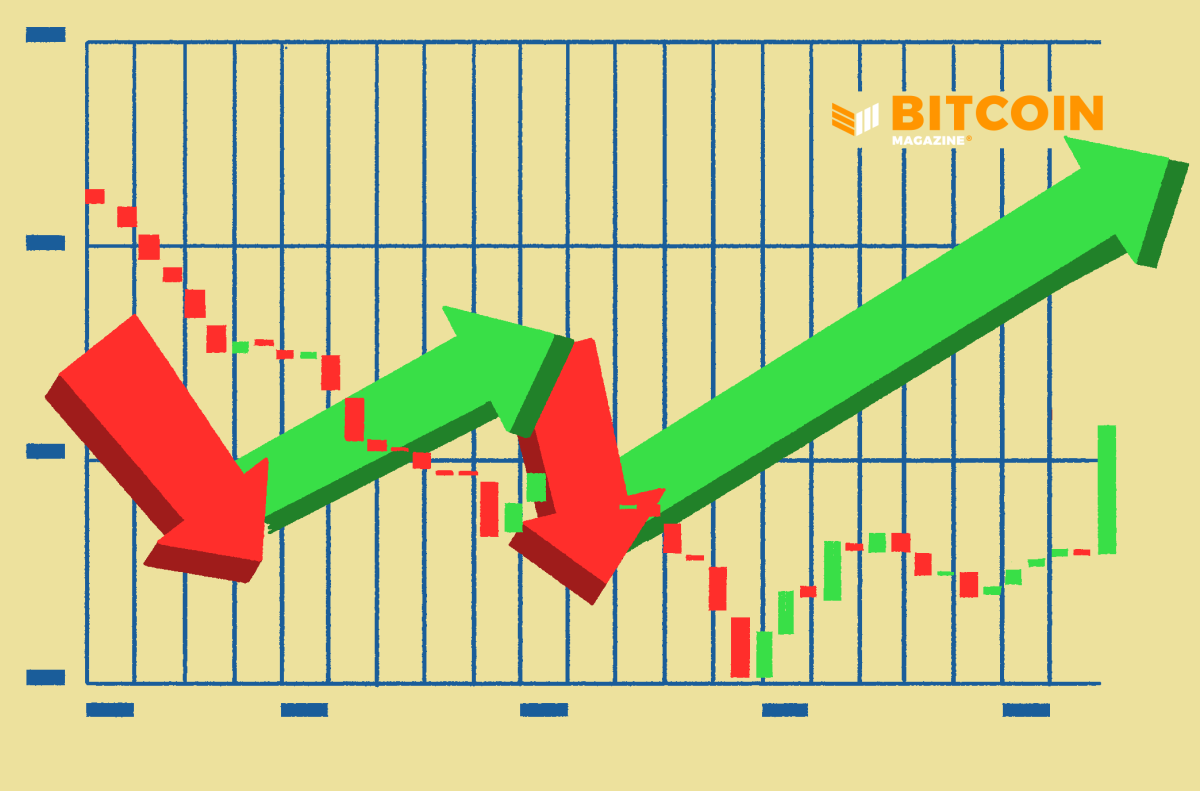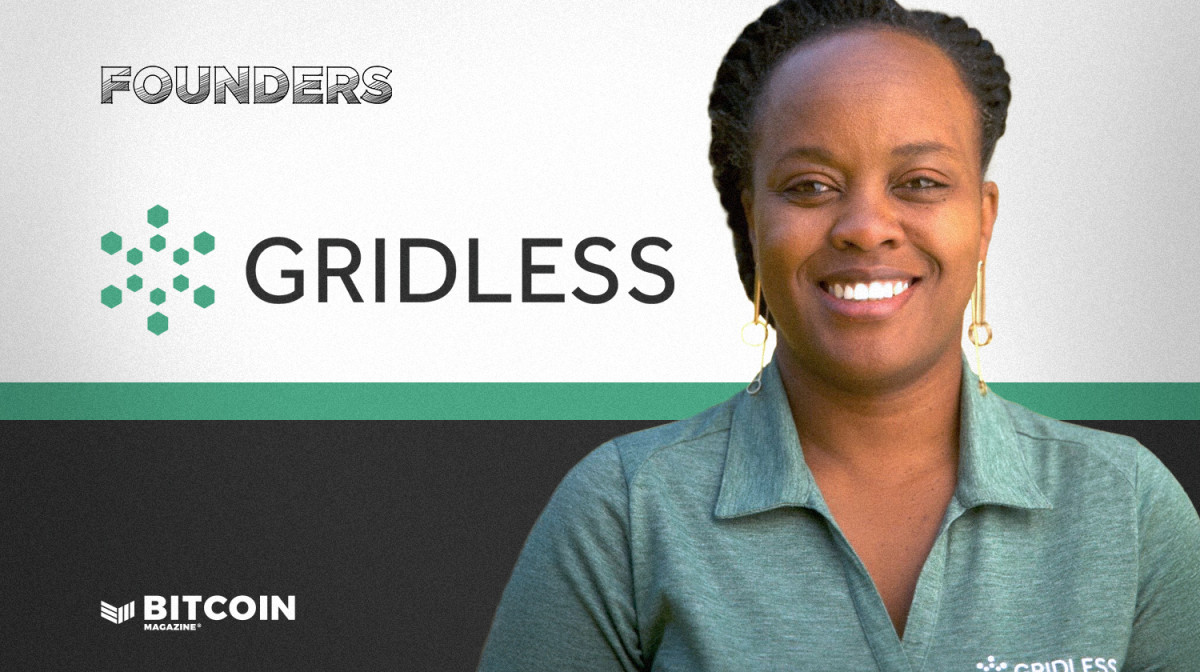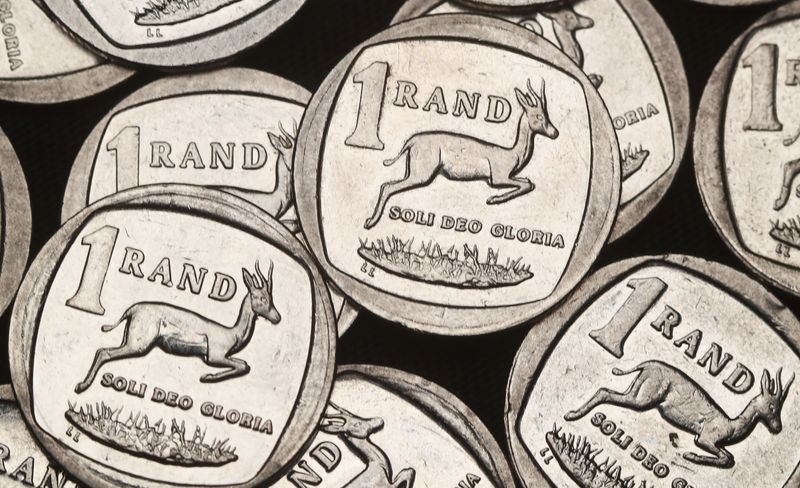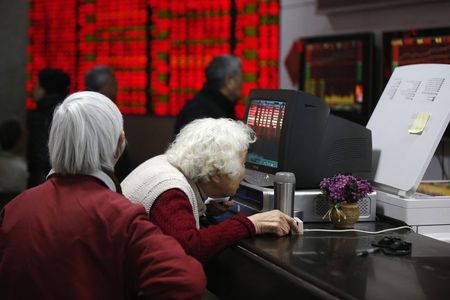Month: December 2024
Buying Bitcoin Is Easy, HODLing Is the Hard Part
Follow Nikolaus On 𝕏 Here For Daily Posts
HODLing bitcoin is so simple, yet it’s one of the most difficult and challenging things to do.
HODLing bitcoin is a choice. You have to wake up every day and choose to continue HODLing BTC. When you have every reason to sell bitcoin, you have to continue HOLDing. This is where most people fail.
The anxiety of losing money kicks in. The fear of being wrong becomes a cloud over your head and you start to wonder if you’re wasting your time and ruining your future by HOLDing bitcoin.
It really isn’t for the weak, so I understand why so many people could not fathom holding onto an asset this volatile, this early into its existence. It makes sense why most people were not ready to go all in on bitcoin, but those who did were highly rewarded for their efforts.
This American HODL thread sums up HODLing bitcoin perfectly.
Here’s a story for $106,600 per Bitcoin.
6 years ago in 2018 I stacked cash all year knowing I would rebuy bitcoin at the “bottom”.
We spent 3 months or so consolidating around $6,600.
I got impatient and was like fuck it this is my moment and deployed half my stack.…
— AMERICAN HODL 
I remember what it was like back in 2018 when the price of bitcoin dropped by 50%. Only at the time, I was a young college student working in physical therapy. I was in a position to take on as much risk as possible because taking care of myself was my only responsibility, so that giant drop did not affect me mentally too much. But for American HODL, as well as many other Bitcoiners who had wives and children to take care of, the stakes here were raised significantly.
Many Bitcoiners want the price to drop lower, so they can accumulate cheaper BTC. But for many Bitcoiners who have already accumulated bitcoin at cheaper prices, it can be soul crushing to watch the price of bitcoin drop by 70-80% in the bear markets. Bitcoiners, after all, are in this for wealth preservation and to increase their purchasing power. So when bitcoin dramatically drops in price, many feel like it’s a punch in the gut. Losing money sucks.
However, if you can withstand the brutal bear markets, the bull markets reward those who sheltered the storm, those who put in the effort to understand this asset and why it has these intense drops and rises. Historically, the price of bitcoin rises for three years in a row, then dumps for one year.
Bitwise $1 million price prediction
HODLing bitcoin is not easy. It is normal and human to feel the depression of the bear market and the euphoria of the bull. So when bitcoin inevitably dumps in the future after the bull market, be prepared to HODL.
Don’t put yourself in a position where you cannot withstand a 70-80% correction.
Understand the asset you got into and realize this is normal and everything is OK. If you can do that, you will make it out of the bear market alive, and be in prime position to take advantage of the next bull market.
This article is a Take. Opinions expressed are entirely the author’s and do not necessarily reflect those of BTC Inc or Bitcoin Magazine.
Mathematically Predicting the Bitcoin Price Bull Cycle Peak
The Bitcoin bull market is heating up, and investors are eagerly searching for data-driven insights into when the next Bitcoin price peak could occur and how high Bitcoin may climb. In a recent analysis video published by Bitcoin Magazine Pro, lead analyst Matt Crosby meticulously crunched the numbers to provide a mathematically backed forecast for Bitcoin’s next bull cycle peak.
By combining historical patterns, moving averages, and diminishing returns, Crosby’s research highlights August 24, 2025, as a critical date—projecting a price range of $256,000 to $310,000 for Bitcoin.
Watch the Full Analysis
To explore the detailed mathematical breakdown and see how Matt Crosby arrives at these projections, watch the full video analysis here.
The Pi Cycle Top Indicator: A Historical Compass
Crosby begins his analysis with the Pi Cycle Top Indicator, a tool famed for its accuracy in predicting Bitcoin’s price peaks within just a few days during previous bull markets. The indicator uses two moving averages:
The 111-day moving average (111DMA).The 350-day moving average (350DMA) multiplied by two.
The “Pi” connection arises from the mathematical ratio between these numbers, approximating 3.142. Historically, when the 111DMA crosses above the doubled 350DMA, Bitcoin has hit its market cycle top:
2017: Predicted the peak within 1 day.2021: Called the exact day of the price cycle peak.
Turning Data Into Predictions
To project the next peak, Crosby introduces the Pi Cycle Oscillator, which quantifies how close the two moving averages are to crossing. Using Bitcoin Magazine Pro’s raw data API, Crosby calculated:
The rate of change for the moving averages.Current trends starting from November 16, 2023, when the oscillator began a new upward trajectory.
Assuming the current trend holds, the two averages are set to cross on August 24, 2025, marking the likely bull cycle peak date.
What About the Price?
To estimate Bitcoin’s price at this projected peak, Crosby examines historical patterns of diminishing returns—a phenomenon where Bitcoin’s price peaks are proportionally smaller with each cycle:
In 2013, Bitcoin’s price was 440% above the moving averages.In 2017, it dropped to 299% above.In 2021, it shrank further to 32% above.
By extrapolating this trend, Crosby provides a range of potential price outcomes:
If returns diminish to 28% above the moving averages (consistent with prior cycles), Bitcoin could peak at $310,000.If returns continue to shrink at a faster rate, the peak could land closer to $256,700.
Why This Matters for Investors
Crosby emphasizes that no analysis is perfect, and trends evolve as new market dynamics emerge. Institutional adoption, macroeconomic factors, and unexpected events could all reshape this trajectory. However, his analysis offers a valuable data-driven roadmap for investors navigating the current bull market.
As the next cycle unfolds, these predictions will become increasingly precise—providing opportunities for investors to optimize their strategies.
Key Takeaways:
Date Prediction: August 24, 2025.Peak Price Range: Between $256,000 and $310,000.Indicator: Pi Cycle Top and Bottom Oscillator, powered by Bitcoin Magazine Pro data.
For access to live data, powerful indicators, and more exclusive content, visit BitcoinMagazinePro.com.
Disclaimer: This article is for informational purposes only and does not constitute financial advice. Always conduct your own research before making investment decisions.
Gridless Is Mining Bitcoin While Fostering Human Flourishing In Africa
Company Name: Gridless
Founders: Janet Maingi, Erik Hersman and Philip Walton
Date Founded: August 2022
Location of Headquarters: United States | Operations in Kenya, Malawi and Zambia
Number of Employees: 10
Website: https://gridlesscompute.com/
Public or Private? Private
Gridless doesn’t just mine bitcoin — it helps to facilitate the electrification of rural Africa, which is notably improving the lives of those who previously either didn’t have access to power or couldn’t afford it.
Gridless’ co-founder Janet Maingi explained to Bitcoin Magazine how the company’s facilities, which are based in Kenya, Malawi and Zambia, have a win-win-win effect for the company itself, the Bitcoin network and the communities that benefit from Gridless’ operations.
“Our mission is to mine Bitcoin profitably,” Maingi told Bitcoin Magazine. “But as we do this, we also do two other things: we push electrification out to the edge in Africa and we decentralize the Bitcoin network, which has historically been very centralized to North America and China.”
In just over two years, Gridless has set a new standard for the type of impact a Bitcoin mining company can have, showing the world that Bitcoin mining can have a symbiotic relationship with the communities it touches and that it can be a catalyst for human flourishing.
I sat down with Maingi in person in Kenya after this year’s Africa Bitcoin Conference to discuss the work she does and the impact it has on the communities it reaches.
A transcript of our conversation, edited for length and clarity, follows below.
Frank Corva: How does Gridless help to electrify Africa?
Janet Maingi: About 600 million Africans have no access to electricity. That’s about two-thirds of our population. The private sector has stepped in because the main grids do not reach everyone on the continent.
You’ll find that bigger cities like Nairobi or Mombasa have electricity, but if you go to rural Africa, people have no access to electricity because of distribution challenges.
A slide from Gridless co-founder Erik Hersman’s presentation at the Africa Bitcoin Conference.
So, the private sector came and started setting up mini-grids. Private companies have done the best they can with these mini-grids. However, they’re very capital intensive, and so there are struggles with fundraising. And even when you actually get them set up, the consumers around your area might not be very wealthy. They’re just living day-to-day. They may have to consider “Do I need electricity or do I need food?”
The companies that construct the mini-grids build power plants that use hydro energy. Let’s say they want to build one that produces one megawatt of energy, but the community only ends up using 200 kilowatts. There’s 800 kilowatts that they generated from the river, but for that 800 kilowatts, they get zero shillings, zero dollars, zero anything.
So, we at Gridless come in and say “That electricity that you’re not able to send to anyone, is what we want.” That’s what you call stranded power or wasted energy, and it’s what we want. So, we become your buyer of last resort.
We come and create an agreement to use that extra electricity, and from a revenue sharing perspective, we work together. It’s a win-win situation. Our data centers use that electricity to mine bitcoin.
But then the catalyzing of electrification comes in. When we’ve used that electricity, it’s become a source of revenue for the energy power plant. They were not making money on that electricity previously, and now they’re profiting from it.
What have we seen as the effect? One, they are able to extend their reach, to distribute electricity further. And secondly, some of them have been able to actually lower their prices. So, consumers who are within their reach but wouldn’t use the electricity because of the cost are suddenly saying, “Hey, hook me up. I can afford to pay for this now.”
Another slide from Hersman’s Africa Bitcoin Conference presentation.
Corva: So, in a sense, you’re subsidizing the rate of electricity.
Maingi: Yes, because we come in and use this power, the energy generator is able to give better prices and increase its reach. So, again, what does this mean? More homes getting lit, more small enterprises getting electricity, more factories getting powered and more health centers getting electricity. You can now imagine the upward spiral effect.
However, the challenge is that doing business in Africa is like an extreme sport.
Corva: Why is that?
Maingi: So, let’s start with just getting the equipment. The mining machines come from China, either from Bitmain or MicroBT, or you’ll get them from a company in the U.S., and the process of getting them into Africa can be painful.
We received a batch that came from the U.S. and it took us 60 something days just to get them into the country. This is from putting them on a ship to getting them here. This doesn’t include figuring out the logistics around getting the miners on site and going through pre-shipment inspection to make sure that they meet the Kenyan standards.
It’s a process that takes almost 120 days from start to end. If you’re running a business, and it takes you 120 days to get your product on the ground, it’s painful.
Secondly, these machines are designed to work very well in China or the U.S.
Conditions in Africa are different, though.
Corva: Does this have anything to do with air quality?
Maingi: Air quality, dust, heat. In Kenya, average temperatures range from 20 to 40 degrees Celsius. So, when you power those machines in an environment where the average temperature is 30 degrees Celsius, you can imagine the heat that they have to deal with.
And then there’s dust. When you get a pre-fitted container from China or somewhere, you discover that the designers just focus on inflow and outflow. But we realized we have issues with dust, so we have to put dust filters on the machines.
And then, in 2022, we learned when we set up the first site that, because of the lights on the miners, they attracted bugs. During the rainy season, the bugs could see the lights and flew into the fans and got mashed up — something nobody thought about.
Lastly, the containers initially were going to cost us $100,000 each, which was too much for us to be profitable. The math didn’t math, as we say. So, we sat down and designed our own container.
Corva: Amazing.
Maingi: Right? And that’s what we’ve been deploying at a quarter of the price. And then the advantage that came with being made in Kenya has allowed us to get passage through the COMESA (Common Market for Eastern and Southern Africa) region, without having to pay extra duties or taxes because it’s recognized as a COMESA product.
That also helped because, being made in Kenya, it’s very easy for us to move the containers around the COMESA region without having to pay extra taxes. We get a tax exemption. Even if the containers from China made sense, if we brought them to Kenya and I had to move them to Uganda, I would have to pay taxes to Uganda, too.
Any country you move foreign products to, you have to pay taxes again. So, it’s been hard, but good solutions have come out of the difficulties.
Have you heard of GAMA, the Green Africa Mining Alliance?
Corva: Yes.
Maingi: During the first Africa Bitcoin Mining Summit last year, we released a blueprint of the container we designed. So, anyone who wants to use it to build their own container using our blueprint can feel free to do so.
Where you need our support, we’ll be ready to guide you. That’s the whole thing about GAMA — How do we exploit our synergies? How do we benefit from one another? How do we find a young lady who wants to start mining and walk her through the journey of getting started?
Corva: Incredible. I want to go back to electrification in Africa. You mentioned earlier that you wanted to share some numbers.
Maingi: What I was saying is that there’s a ripple effect when we partner with the energy generator. We’ve been able to see more homes or households getting connections.
If you’ve been in rural Kenya or Africa, then you understand how one bulb can transform a life. I’ll use the example of children coming home from school. They have assignments and use these tiny paraffin lamps to study. The fumes from them are horrible for their health. But this is a child for whom there’s no plan B. The teacher expects this child to come back to school with her assignments completed. Not having electricity is not an excuse.
A guy once told me that sometimes, when his daughter is busy doing an assignment, the paraffin runs out. When the nearest gas station is almost four miles away, who is going to go and look for paraffin at that time? Nobody. Tough luck.
So, the child gets to school and is either in trouble because she didn’t do her assignments or is now lagging behind because now those quote unquote “are yout personal problems.” Because of that one bulb they now have, he was like, “My daughter is performing so well in school.” Then, health wise, all these visits they used to make to the hospital because she was breathing in the paraffin fumes no longer happen.
Corva: It seems you want to make my cry.
Maingi: No, there’s no crying. (Author’s note: This woman doesn’t play.) It’s a reality.
Then, in Zambia, I remember talking to women who were talking about childhood vaccinations. Between zero and three years, there are certain vaccinations recommended by the WHO that your kid needs to get — measles, polio, etc. — but the nearest health center that has them sometimes isn’t close.
So, you do your math, and you’re like, “I can’t afford bus fare to do this.” And so this disease sounds more serious, I’ll get my child the vaccination for that one, while this one I’ll pass on. But really all of them are important for children.
Now, Gridless is coming into Malawi and getting electricity providers to connect more homes in the Bondo area. Health centers are getting powered on, so more vaccines are available in more local health centers.
A slide on energy use in Malawi and the UK from Hersman’s presentation.
While before you used to say “Polio sounds serious, I’ll get my child that vaccine, but with measles, I don’t know who has died of that recently, so maybe, I won’t get my child that one,” now more people can get it.
Now, we will have a young generation who, we believe, as we keep doing this, is going to thrive. They’re going to grow. You’ll possibly get rid of childhood mortalities because these rural areas get electrified.
Corva: And bringing energy to these regions also helps support livelihoods I assume.
Maingi: Yes, of course. There’s a tea factory in Muranga, Kenya, which is in the highlands.
We partnered with the energy generator in the area and they were able to give the factory power. Now, their facilities are able to support the tea factory, which has two benefits: tea farmers can bring their tea to the factory, which means it doesn’t spoil on the farms because they can’t get it to point B in time and more employment has also been created just by that tea factory becoming an electrified space.
We keep saying why we know this will make a difference is because energy is a base of human progress.
Corva: There’s no such thing as an energy poor country that’s rich.
Maingi: If you look at the Maslow’s hierarchy of needs, it used to go food, shelter, clothing, but I put energy there. Energy is a basic need. It’s a must have for anybody to actually be allowed to live a decent life. For people to make a decent living, energy has to be in that math.
A slide on energy production from Hersman’s presentation.
Corva: Is it true that you’ve recently created software that helps with energy demand response?
Maingi: Yes. We realized that we need to get more proactive in creating real-time demand response. Before, we were either reacting too late or too early to the power available.
Remember we’re the buyer of last resort, so communities come first and small businesses come second. For us to be able to live up to that promise, we had to make sure we weren’t sucking in electricity that was required by somebody else at that time.
So, let me paint a picture. In normal households, people wake up at 6 a.m., so there’s a surge of electricity. At that stage, our software gets a signal and reduces our consumption to meet the demand needed by the grid. Then, at 8 a.m., everybody goes to school and switches off their lights and there’s too much electricity in the grid. That’s when we power more mining machines.
We get the signal, power more machines, suck in the electricity and keep on going until maybe 6 p.m. when people have gotten back home and they need the electricity. Gridless turns down their machines and returns the electricity.
At 10 p.m. they all go to bed, and we power up more machines. This is all done with software we developed internally called Gridless OS. It allows for real-time demand response. It makes it so everybody gets what they need, and it stabilizes the grid.
Corva: Are you setting certain standards with Gridless that others are following in Africa or in other parts of the world?
Maingi: It’s set a trend that people are following. Sometimes you go to conferences and people keep referring to Gridless. That’s when you realize, “My God, this thing is bigger than we thought.” And so you start to understand how this has made a difference, that it doesn’t exist in a vacuum.
At the end of the day, everyone has different ways of mining bitcoin, and there’s a positive impact to the community whichever way you do it. Look at Bigblock Datacenter — Sebastian Gouspillou in the Congo — where they’re using the heat to dry cocoa for chocolate they sell. Think of what that has created for that economy.
Corva: I think Sebastian brought me to tears when I met him, too.
Maingi: What’s exciting for us and other players within this space is that we are the ones who understand our problems, and it’s exciting to see African companies deciding “Not only will I mine bitcoin profitably and decentralize the network, but there’ll be some benefit to our community, as well.”
Bitcoin or University: Which Investment Yields Greater Financial Freedom?
A university education is often considered to be the best path to superior lifetime earnings and financial freedom. Actual earnings seem to bear this out. People with a four-year degree make far more over their lifetimes than those without—about 75% according to this study by the Federal Reserve Bank of San Francisco. But this path must be weighed against alternatives. Bitcoin is also an excellent investment, with a 71% average compound annual growth rate (CAGR) over the past ten years. The growth trajectory of bitcoin has created an alternative path to financial freedom. What if we invested in bitcoin instead of time and tuition for university? Which would yield more over a career?
Valuing university education
The price of a university education has vastly outpaced inflation, with tuition going up more than 250% in inflation-adjusted dollars in the past 40 years and 830% in nominal terms. Furthermore, many observers claim that universities have shifted focus over time toward politicization and controlling speech more than free inquiry and entertainment of students more than quality education, leading many parents to question the investment. Parents and students are rightly asking now whether university is worth the investment. Confidence in higher education has dropped precipitously from 57% in 2015 to 36% in 2023. Students are beginning to vote with their feet; college enrollment has dropped in the US for recent high school graduates from a high of 70% in 2009 to 61% in 2023. Parents and students are looking for other options.
Even the 75% college wage premium is misleading. The reality is that the group of students who achieve a four-year degree tend to be smarter and harder working than those who go to work right out of high school. This number doesn’t tell us what the premium would be for an individual student who could achieve a four-year degree but chooses not to.
In his book The Case Against Education, Bryan Caplan makes the case that the college wage premium drops considerably when considering an individual student rather than the group. His extensive data analysis shows that the college wage premium drops in half when isolating an individual student of comparable ability in high school and college. That is, the college wage premium is closer to 38% for an individual. The same individual who would earn $1M over a lifetime of wages without a degree would be expected to earn $1.38M with a degree.
Even this adjustment overestimates the added value of college, where Caplan calculates that approximately 80% of the added value is merely signaling—demonstrating to employers that the student is the kind of student who has the characteristics to achieve a four-year degree and be successful in the workplace. Only 20% is actually added value from education.
In addition to the cost of university and the relatively small gains, students sacrifice four years of lost wages while they are in school. This four years could be invested not only in making money but in gaining valuable skills that would make them more competitive and useful in the marketplace after four years.
Valuing bitcoin investment
Bitcoin represents an entirely new asset class—a digital asset whose supply remains absolutely scarce regardless of demand. As governments demonstrate a complete inability to say no to borrowing and printing new fiat money, both sophisticated investors and ordinary people are looking for an asset that can’t be inflated by any powerful individual, government, or bank. As the world continues the process of becoming familiar with bitcoin and adding it to their holdings, absolute scarcity means the price of bitcoin can only trend up in the long term. This is borne out in bitcoin’s superior returns over its lifetime that has exceeded every other common asset class in 11 out of 14 years. Bitcoin’s 71% CAGR over the past 10 years has dwarfed the 11% that the S&P 500 has yielded in the same period.
Bitcoin has superior scarcity, portability, and verifiability compared to gold. It has a very low cost of ownership and little jurisdictional risk. It has some immunity to regulatory risk compared to other assets. The properties of bitcoin strongly suggest that it will significantly eat into the existing store of value of gold, bonds, real estate, and stocks.
Michael Saylor has recently published a 21-year price forecast for bitcoin. His bear case estimates a 21% CAGR, a base case 29%, and a bullish case 37%. If bitcoin has returns like this, students and parents need to consider this alternative closely before investing tuition money up front and forgoing four years of income and practical skill development.
Another price model, the power-law model promoted by @Giovann35084111 and others, has demonstrated remarkable fidelity to price over the history of bitcoin. This model predicts more rapid growth early on with gradually decreasing returns as bitcoin matures. It posits that the price of bitcoin on average increases in proportion to time raised to the sixth power, where time refers to total time since the genesis block. This model projects about a 45% CAGR in the coming year, falling gradually to around 25% in ten years.
Comparing the two
We look at both options as investment in capital—a university education as an investment in human capital and bitcoin as an investment in an appreciating capital asset.
The cost of a university education involves both direct costs and opportunity costs: 1) paying four years of university tuition and 2) forgoing four years of income and valuable job experience. The payoff is an expected wage premium of 38% over a career. The alternative we consider here is to invest in bitcoin beginning on Day 1 the funds that were saved for tuition. In addition, we assume that parents pay living expenses for four years in either scenario. Thus, living expenses are not added to the cost of the university option and are not subtracted from the non-university wages. Instead, all of net salary is used to buy bitcoin at the end of each year for the four years that the parents would have otherwise supported a student at university.
We assume in both scenarios that the salary grows by 3% per year. This is intended to account for inflation as well as real growth. Dollar values and models are assumed to be in nominal values and are not adjusted for inflation. Since we are comparing two scenarios across the same time frame, the exact level of inflation has very little impact on the relative performance of the two.
Tuition varies dramatically across university categories. For the year 2024-2025, in-state tuition at a ranked public university in the U.S. averages $11K per year. Out-of-state tuition runs $25K per year. Students attending a private college will pay an eye-watering $44K per year. And Ivy League tuition will set families back $65K per year. Community colleges cost less than four-year universities. In addition, some students will qualify for scholarships and other financial aid. And some may live in places where tuition is free (well—paid for by further fiat money printing).
Let’s consider two cases—an in-state public university and free tuition. We assume in the bitcoin alternative that the amount of yearly tuition is used to purchase bitcoin annually as a kind of dollar-cost averaging to spread the risk of the time of entry in the market.
For the bitcoin price model, we consider two scenarios: the Saylor bear case (21% CAGR) and the power-law model that starts with a higher return and gradually falls over time, in keeping with its historic power-law curve.
We compare results over a 40-year career (4 university years + 36 working years for the university case). We assume that the base non-college take-home pay is $30K per year, and the annual college premium is calculated so that the total lifetime premium is 38%. We assume the non-college path saves the bitcoin purchased with tuition money and the first four years of take-home pay and nothing after that. The college path purchases bitcoin with the college wage premium each year and lives off of the same take-home pay as the non-college path.
In each plot we show three values over time:
Non-College Investments: Dollar value of bitcoin from purchases made from saved tuition and wages earned in first four yearsCollege Investments: Dollar value of bitcoin from purchases made from college wage premium each yearCollege Premium Savings: Dollar value of cumulative savings from college wage premium (not invested in bitcoin)
To give the college option the most favorable possible treatment, we assume that the college wage premium is also invested in bitcoin each year.
Results
Even in the Saylor bear case (21% CAGR), investing tuition money and the first four years of income in bitcoin far outperforms the college wage premium over a career. The college wage premium never catches up even after 40 years. Because of the bitcoin investment in both scenarios, both are very attractive. If we define financial freedom as having $5M in bitcoin savings, that is achieved in 20 years for the non-college path and in 25 years for the college route. By comparison, merely saving the college premium in fiat without investing in bitcoin is an abysmal strategy, returning less than 1/200 of the non-college path and about 1/100 of the college path with bitcoin investment.
Now let’s suppose your student gets free tuition, either through a scholarship or government-subsidized tuition. In that case the only advantage the non-college route has is to save four years of income before being on the same footing as the college route.
The results show that even in this case the non-college route yields a better return simply by being able to invest four years of salary instead of deferring superior wage by four years.
What if the bitcoin power law continues to match the appreciation of bitcoin? We consider both public university tuition and free tuition.
In this case the non-college path dramatically outperforms the college path, whether or not tuition is free. The public university tuition alternative with the power law achieves financial freedom ($5M) in only 15 years from high school—at age 33.
Other scenarios
What happens if these scenarios are overly optimistic for the performance of bitcoin? If we drop the bitcoin CAGR all the way down to 10% for the public university case, the two scenarios basically break even. If we go all the way down to a 5% CAGR, it still takes 18 years for the college path to pay off relative to the non-college path.
What if the college path prepares the student for a more lucrative career—like engineering, medicine, or law—where the college path may be the only option for those careers and where the college wage premium may be much higher? In the case of a public university with a 21% bitcoin CAGR, the premium must be 113% to reach the breakeven point over a 40-year career.
That’s not the whole story. Medicine and law require even more years of deferred wages and even more tuition than a four-year degree. Assuming eight years of deferred wages and eight years of public university tuition (surely an underestimate for medical or law school tuition), the college wage premium must be a towering 300% just to break even. Engineering appears to be the sweet spot here—preparation for a professional career in four years with a larger-than-average expected wage premium. Even here, however, the required breakeven premium of 113% is a tall order.
If you’d like to investigate other scenarios, here is a Google Sheet where you can experiment with the parameters and even look at the formulas I used to create these calculations.
Broader considerations
This analysis narrowly focuses on the financial payoff of a capital investment. It doesn’t consider personal satisfaction derived from the alternative paths, motivation, the networking benefits of a university, the personal growth experience of a university vs. working directly from high school, and many other factors. It also doesn’t consider the potential volatility of bitcoin, either concerning the uncertainty or the additional stress of riding the bitcoin rollercoaster.
If the thesis concerning bitcoin appreciation is anywhere close to accurate, these findings suggest that a non-university path with a bitcoin savings strategy is likely to be financially advantageous compared to a university education path even with a bitcoin savings strategy. This conclusion frees up students and parents to give more subjective consideration to other paths that may fit their personality, values, and goals. Bitcoin not only gives a path for financial freedom but a path toward greater freedom in career choices less constrained by financial or academic factors.
This is a guest post by Stan Reeves. Opinions expressed are entirely their own and do not necessarily reflect those of BTC Inc or Bitcoin Magazine.
Macquarie sees Canada’s political unrest as opportunity to go long CAD
Post Content
Dollar retains strength ahead of Fed meeting; sterling sees support
Post Content
BofA maintains bullish GBP/CHF outlook for 2025
Post Content
Exclusive-Syria retains 26 tons of gold reserves after Assad’s fall – sources
Post Content
South African rand weakens ahead of Fed decision
Post Content
Asia FX slips ahead of Fed rate decision, dollar remains near 3-week high
Post Content








